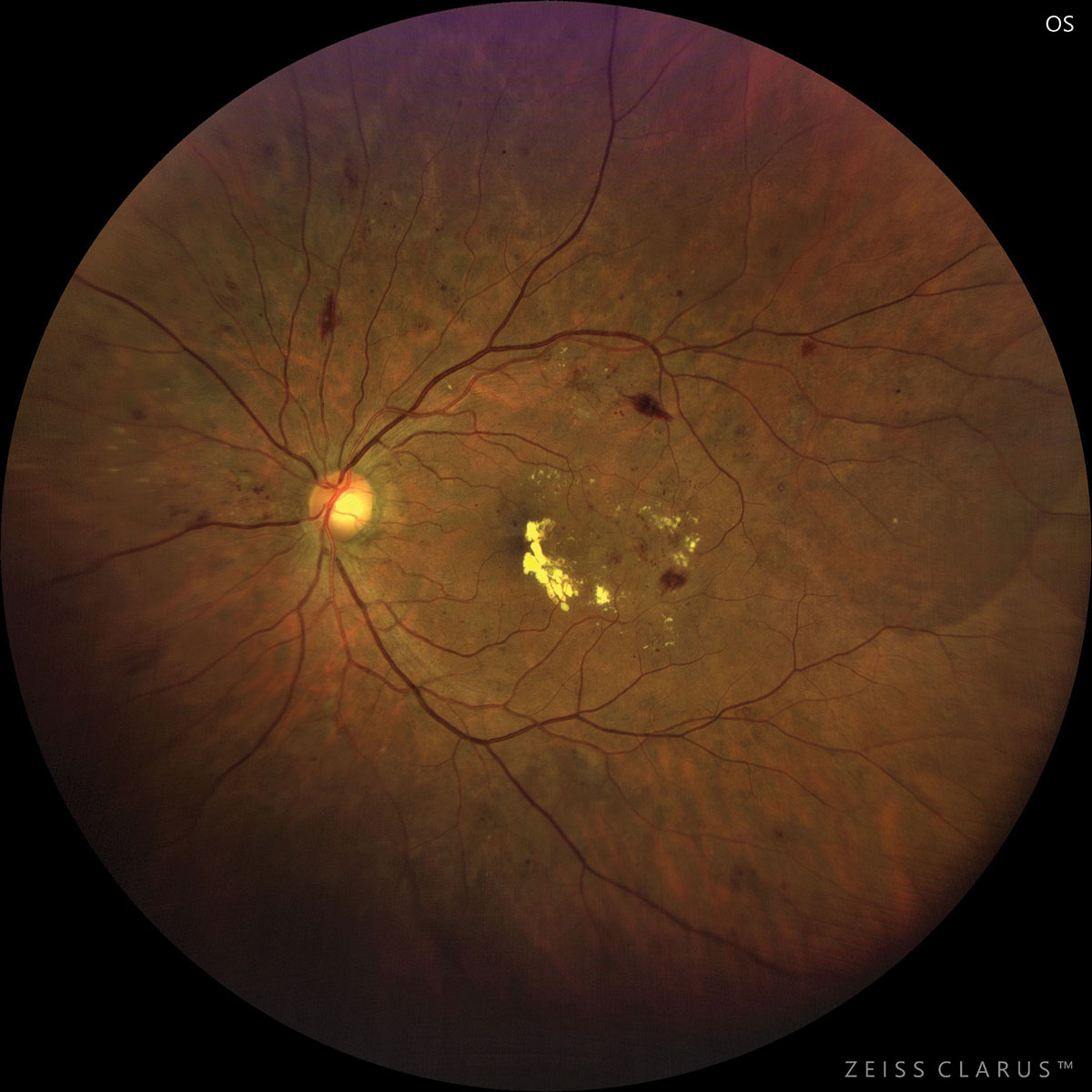 |
| Simvastatin, allopurinol, temazepam, losartan/diuretic in combination and estradiol hormone replacement therapy all may reduce the incidence of DME, the study found. Photo: Jay Haynie, OD. Click image to enlarge. |
With the prevalence of diabetes on the rise, every tenth patient has vision-threatening ocular complications in the form of proliferative diabetic retinopathy or diabetic macular edema (DME). As a result, researchers are trying to find ways mitigate risk of development. In one new study, systemic drugs were analyzed for their association with DME.
Included in the study, which was conducted in Finland, were 150,353 individuals with diabetes; the endpoint event was DME development. Follow-up took place over 16 years and was started between 1997 and 2010. A nested case-control design was implemented, comparing 2,630 DME cases and 95 systemic medications against 13,144 age- and sex-matched controls without DME.
The study researchers found that DME occurred at an incidence rate of 1.8 per 1000 person-years. Lower incidence was seen in women than men. Lower risk of DME was associated with the hormone replacement therapy estradiol, insomnia drug temazepam and allopurinol, a medication for gout. Conversely, higher incidence was linked with insulin or insulin analog use, sulfonylureas, diuretic furosemide, calcium channel blocker amlodipine, and ACE inhibitors ramipril and enalapril.
Based on these associations, the authors believe their findings “suggest that associations of systemic medications with the incidence of DME may shed light on the pathogenesis of complex DME, encouraging further studies.”
When looking at each class of drug, there are some potential explanations for the observed associations. Some hypertensive medications used to prevent diabetic kidney disease are suspected to cause retinal hypoxia through decreased perfusion pressure in retinal capillaries, thus contributing to DME development. Both insulin and insulin analog use were found to produce greater DME risk in this study, which is hypothesized to occur because insulin treatment is a factor in increased vascular leakage. However, metformin was found to help prevent DME development.
Hyperlipidemia medications and lipid-lowering agents, conversely, are thought to be protective against diabetic retinopathy progression since lipid deposits may aggregate in the macula in DME eyes. Exogenous hormone exposure to estradiol was also found protective against DME, which may be related to the overall 43% lower incidence observed in women than men. These exogenous estrogens may have a neuroprotective factor on the retina and modulate ocular blood flow or may be due to antioxidant and anti-inflammatory mechanisms. Allopurinol may reduce DME incidence by reducing plasma uric acid and oxidative stress, in effect being therapeutic to vascular dysfunction in diabetes. Finally, lower incidence of DME with anxiolytic drugs is a new finding observed by the researchers and requires more research to be done to fully elucidate the relationship.
The authors conclude with the projected future direction of these drugs’ roles in diabetic patients: “By avoiding systemic medications that may potentially contribute to the development of DME as an ‘adverse side effect’, the vision of the diabetic patient could be saved better,” they wrote in their paper. “Gaining a deeper understanding of the interactions between DME development and the specific systemic medications used by individual diabetic patients is crucial for tailoring effective DME treatment regimens.”
Loukovaara S, Korhonen A, Niskanen L, Haukka J. Development of diabetic macular oedema shows associations with systemic medication—an epidemiological study. Acta Ophthalmol. October 3, 2023. [Epub ahead of print]. |

